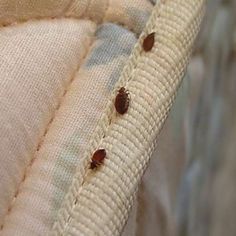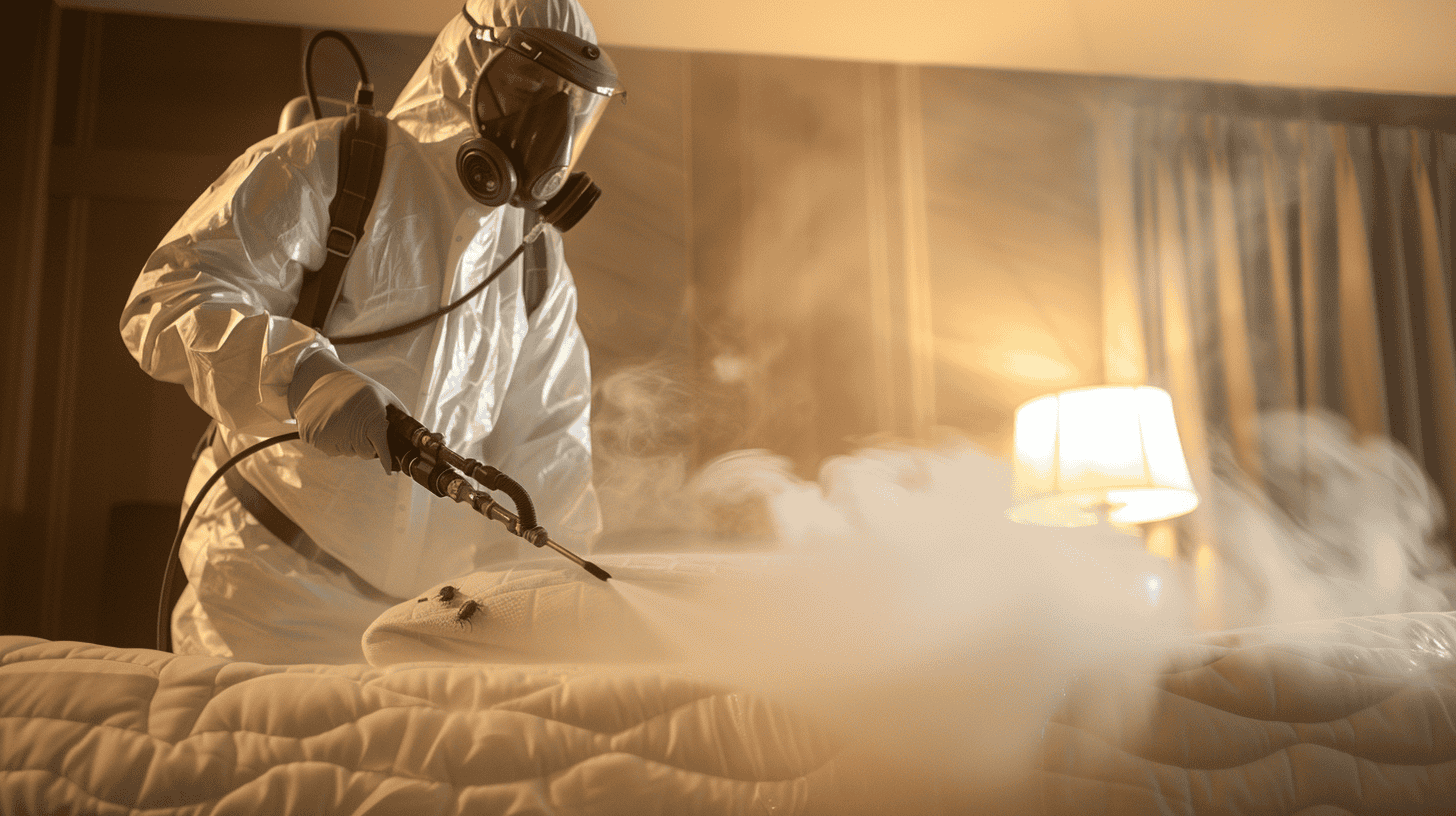Obtain Informed About the Types of Parasite Control Techniques and Their Benefits for Home Owners
Recognizing the different bug control approaches readily available to homeowners is necessary for reliable pest administration. House owners who are well-informed can make critical selections that not only address pest issues however likewise enhance the total high quality of their living environment.
Chemical Parasite Control Techniques
Chemical insect control approaches are an important element of integrated insect administration techniques for homeowners looking for reliable options to pest infestations. These methods entail the application of chemical materials designed to eliminate or discourage bugs that intimidate personal effects, health and wellness, and convenience. Typical chemicals made use of include pesticides, fungicides, herbicides, and rodenticides, each customized to target specific insects.
The key advantage of chemical insect control is its quick effectiveness; lots of formulas give immediate results, decreasing pest populaces dramatically quickly. Furthermore, developments in chemical formulas have caused products that are much more eco-friendly and have lower toxicity levels for non-target microorganisms when used properly.

Biological Pest Control Methods
All-natural bug control techniques have actually gained importance as property owners seek safer and much more lasting options to traditional chemical techniques. Biological insect control strategies utilize all-natural predators, bloodsuckers, or microorganisms to take care of bug populations effectively. This technique is not just eco-friendly however likewise reduces the risk of injury to non-target species, including useful pests and wild animals.
Among one of the most common organic control techniques entails introducing natural predators right into the setting. Ladybugs can be used to regulate aphid populaces, while nematodes target soil-dwelling bugs like grubs. Furthermore, parasitoids-- organisms that survive on or within a host-- can be employed to control specific parasite types by laying eggs inside them, ultimately resulting in their demise.
Another method is making use of biopesticides, which are stemmed from all-natural products such as microorganisms, plants, or minerals (bed bug exterminator). These products can successfully target bugs while presenting very little risk to animals and humans. In general, biological pest control methods supply home owners with an efficient ways of insect administration that aligns with environmental principles, advertising a healthier living environment while reducing reliance on synthetic chemicals
Mechanical Insect Control Techniques
Mechanical bug control methods include a range of approaches that physically prevent or get rid of parasites without making use of chemicals. These methods are especially beneficial for home owners seeking eco-friendly alternatives while making certain the safety of their home.
One usual approach is making use of obstacles, such as webs, catches, and screens, which avoid insects from entering homes or details areas. As an example, mounting window screens can effectively maintain pests out, while utilizing physical barriers around yards can deter larger bugs like rabbits or deer. Additionally, mechanical catches designed for rodents can catch and remove these parasites without the demand for hazardous substances.
An additional effective method includes making use of vacuum cleaners and brooms to remove parasites straight from surface areas. Normal cleaning and upkeep can substantially decrease pest populations by removing food resources and concealing places. Using devices like ultrasonic pest repellents can deter numerous pests through sound waves that are undesirable to them but faint to humans.
Cultural Pest Control Practices
Social bug control techniques concentrate on modifying the environment and administration methods to develop conditions that are less helpful to pest infestations. These methods are basic in maintaining a well balanced environment and decreasing the dependence on chemical treatments. By changing agricultural techniques, property owners can effectively prevent pests while advertising plant health.
One common method consists of plant rotation, which interferes with the life cycles of bugs by transforming the kinds of plants grown in a details area (bed bug exterminator). This not only reduces pest populations yet likewise boosts soil health and wellness. Furthermore, intercropping-- Resources growing diverse More about the author plants in distance-- can perplex parasites and minimize their ability to situate their preferred host plants
Water monitoring is an additional essential aspect of social practices. Proper watering techniques can avoid standing water, which serves as a breeding place for insects and various other bugs. Preserving sanitation in and around the home, such as regularly removing debris and food waste, can significantly minimize parasite tourist attraction.
Incorporating these social methods right into a thorough bug management strategy allows house owners to develop an atmosphere that normally prevents pests, therefore enhancing the effectiveness of various other control techniques while advertising sustainable gardening and landscaping.

Integrated Pest Administration Approaches
Integrated Parasite Monitoring (IPM) stands for an all natural method that incorporates numerous methods to successfully manage bug populations while decreasing environmental impact. This methodology integrates organic, cultural, physical, and chemical practices to attain sustainable insect control. By evaluating pest populations and their natural adversaries, IPM stresses monitoring and identifying bugs prior to applying control actions.
One of the core concepts of IPM is using thresholds, which develop the level of bug task that requires treatment. This makes certain that therapies are used only when required, reducing the reliance on chemical pesticides. Organic control approaches, such as presenting all-natural killers or parasites, work in conjunction with social techniques like crop turning and habitat adjustment to interfere with pest life process.
Moreover, IPM motivates making use try this out of least-toxic chemical options when intervention is required, focusing on products that present very little threat to non-target microorganisms and the atmosphere. For home owners, adopting IPM approaches not just enhances the efficiency of insect administration but also advertises a healthier living atmosphere, cultivating biodiversity and reducing chemical exposure. Inevitably, IPM empowers home owners to make informed choices that balance parasite control with environmental responsibility.
Conclusion
In final thought, understanding the various bug control methods encourages house owners to make informed decisions regarding pest management. Each strategy-- chemical, biological, mechanical, cultural, and integrated insect management-- offers unique benefits that provide to various requirements and preferences.
Comprehending the different parasite control methods offered to homeowners is essential for effective pest management.Chemical pest control techniques are an important component of integrated pest management strategies for homeowners looking for reliable services to pest infestations. On the whole, organic pest control methods offer homeowners with an effective means of bug management that straightens with ecological concepts, promoting a much healthier living atmosphere while lowering reliance on artificial chemicals.
Cultural insect control techniques concentrate on modifying the setting and monitoring strategies to develop conditions that are less helpful to pest problems.In verdict, recognizing the numerous bug control techniques equips property owners to make informed decisions regarding pest monitoring.